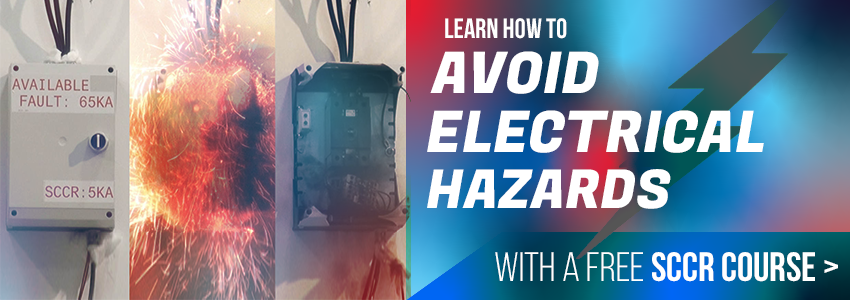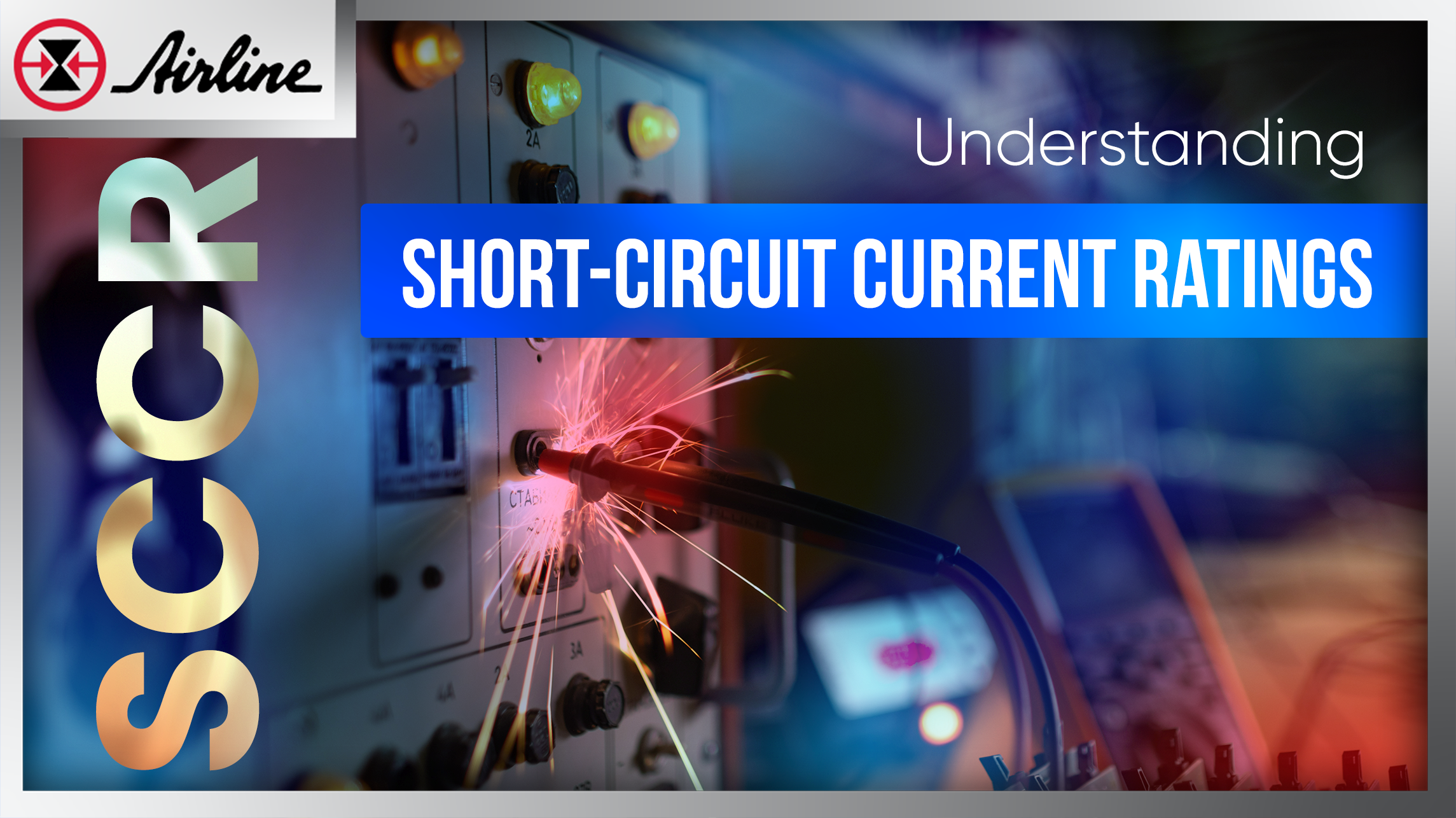As a controls engineer or panel builder, you know electrical safety is paramount in any application. But one overlooked key factor is understanding and complying with Short-Circuit Current Rating (SCCR) requirements, which changed in 2017. So what changed, and why does it matter? This post will provide an overview of SCCR requirements for industrial control panels, including what SCCR is, why it matters, and specific requirements.
Shop Circuit Protective Devices
Skip to a Section
What is SCCR? | Why is SCCR Important? | What are the new SCCR requirements by the NEC? | How do I follow SCCR requirements? | Attend Free SCCR Courses at Connect & Learn Day
What is SCCR?
SCCR stands for Short-Circuit Current Rating, which measures the maximum current a device or system can safely handle during a short circuit. It is critical in preventing electrical hazards, ensuring the devices and systems can safely absorb and dissipate electrical energy during a fault.
You can find the SCCR requirements in the National Electrical Code (NEC) under Article 110.10, outlining the requirements for electrical equipment markings with its SCCR. The NEC also guides how to calculate the SCCR of electrical equipment and systems and specifies the minimum SCCR requirements for various types of equipment in different settings. It is essential to note that the NEC's requirements for SCCR changed in 2017, which we will get into later.

Why is SCCR important?
Ensuring a device or system has a sufficient SCCR is critical for preventing electrical hazards, such as fires, explosions, and electrocution. If a short circuit occurs and a device or system can't handle the resulting current, it can fail catastrophically, with potentially disastrous consequences like electrical sparks and fires.
In addition to preventing electrical hazards, SCCR also plays an important role in minimizing downtime and equipment damage. For example, if a fault occurs and a device or system can't handle the resulting current, it can cause equipment damage, production delays, and increased costs.
What are the new SCCR requirements by the NEC?
The NEC's requirements for SCCR did change in the 2017 edition of the code. Here are some of the summarized changes:
1. The updated definition of SCCR clarifies that it is the maximum current a component assembly or equipment can safely withstand during a short circuit.
2. Introduced a new method for determining the SCCR of an assembly or equipment called the "Marking and Instructional Method."
3. Requirements that the SCCR of equipment and assemblies be field marked in a visible location.
4. Requirements for SCCR coordination between equipment, including a new table that outlines the minimum SCCR requirements for different types of equipment in various settings.
5. Requirements for documenting and labeling SCCR ratings, including how to increase the SCCR of a component assembly or equipment safely.
How do I follow SCCR requirements?
The specific SCCR requirements for industrial control panels depend on a number of factors, including the size and complexity of your panel, the types of components used, and the local regulations and codes that apply. In general, though, there are a few key things to keep in mind regarding SCCR:
1. Learn how to calculate the panel's short-circuit current.
It's essential to learn how to calculate or measure the maximum available fault current for the specific panel installation. This information is needed to ensure that the panel's SCCR is sufficient to handle the maximum current that could be generated in a fault condition.
2. Conduct testing and certification.
Once a panel is designed and built, it's important to conduct testing and certification to verify that it meets the required SCCR standards and regulations. This may involve simulating short-circuit conditions or performing other tests to ensure the panel can safely handle the expected fault current.
3. Choose appropriate components.
The components used in an industrial control panel can have a significant impact on its SCCR. For example, fuses, circuit breakers, and other protective devices must have a sufficient interrupting rating to handle the maximum available fault current. Transformers and other equipment also need to be rated appropriately for the expected fault current.
Summary
Understanding SCCR requirements for industrial control panels is critical for ensuring electrical safety in industrial settings. By choosing appropriate components, calculating or measuring the panel's short-circuit current, and conducting thorough testing and certification, you can ensure that your industrial control panels are up to code and able to handle potential faults safely and reliably.
Shop Circuit Protective Devices
Resources
- Spartanburg, SC SCCR Class Registration - May 4, 2023
- Bensalem, PA SCCR Class Registration - May 9, 2023'
- General Requirements of the NEC
- National Electrical Code (NEC)
- More Electrical Blog Posts
- Airline Resources











Leave Comment